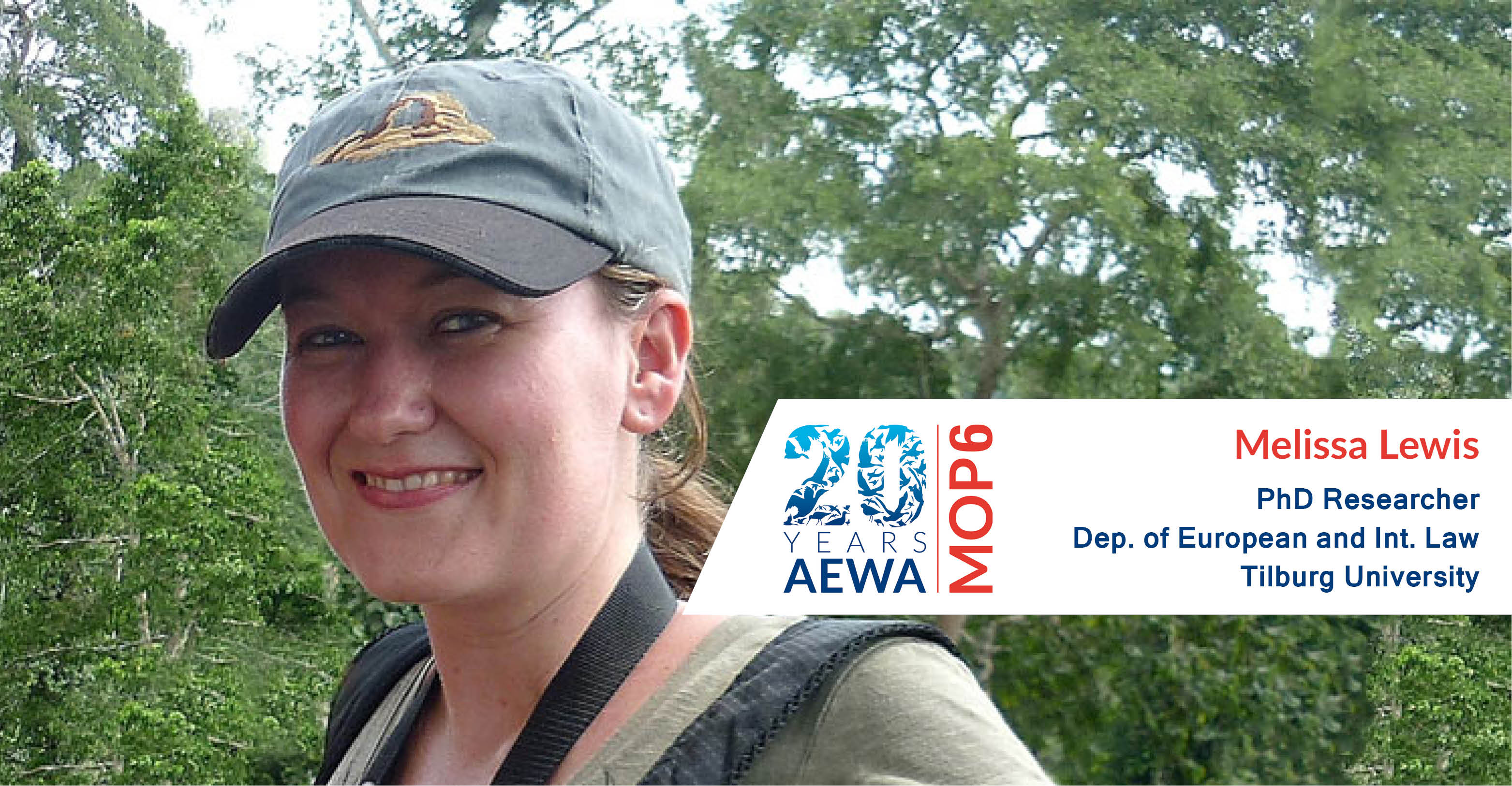AEWA 20th Anniversary Statement – Melissa Lewis

Ms. Melissa Lewis, PhD Researcher, Department of European and International Law, Tilburg University, the Netherlands
Bonn, 25 March 2015 - During their annual movements, migratory waterbirds traverse multiple jurisdictions, the conservation laws and policies of which may differ considerably. It is thus unsurprising that, over the past century, a myriad of international instruments have been adopted to facilitate international cooperation in bird conservation. However, a shortfall of many of these instruments is that they have failed to encompass species’ entire migration routes—indeed, bird conservation in several regions continues to be facilitated through patchworks of bilateral legal agreements, in combination with non-binding initiatives.
"As a lawyer, I consider AEWA to be remarkable not only because of its firm emphasis on flyway-scale conservation (as highlighted by the MOP6 slogan: ‘Making Flyway Conservation Happen’), but also because of its detailed and legally rigorous provisions and flexible design, which distinguish the Agreement from many other conservation treaties."
As a lawyer, I consider AEWA to be remarkable not only because of its firm emphasis on flyway-scale conservation (as highlighted by the MOP6 slogan: ‘Making Flyway Conservation Happen’), but also because of its detailed and legally rigorous provisions and flexible design, which distinguish the Agreement from many other conservation treaties. The relative ease with which the Agreement’s annexes can be amended has allowed AEWA to evolve to address additional species and threats, and would further enable the expansion of AEWA’s geographic scope, should Parties consider this to be desirable. In recent years, the Agreement has also demonstrated its ability to act as a pioneer in respect of both substantive conservation issues (such as adaptive harvest management in Europe) and institutional matters (with AEWA having established the first compliance mechanism within the CMS Family).
During my six years on the AEWA Technical Committee, I have (as a South African) been especially pleased to observe the recent emphasis on supporting implementation in Africa, and on tailoring the Agreement’s guidance to address African conservation concerns. Although the African continent is crucial for many AEWA species, the challenges facing this region are daunting. There is still a long way to go before AEWA’s objectives are fully achieved in Africa. However, I think that the Agreement’s African Initiative has made some important first steps in this direction, including through the development of a Plan of Action for Africa, the use of AEWA’s Small Grants Fund to support projects in this region, and the development of new International Single Species Action Plans for several African species (such as the Grey Crowned Crane, one of my personal favourites). I hope that governments and other stakeholders throughout the Agreement Area continue to support this Initiative in the future, thereby enhancing AEWA’s contribution to waterbird conservation at the flyway level.
Melissa Lewis
PhD Researcher
Department of European and International Law, Tilburg University, the Netherlands
Last updated on 30 March 2015



